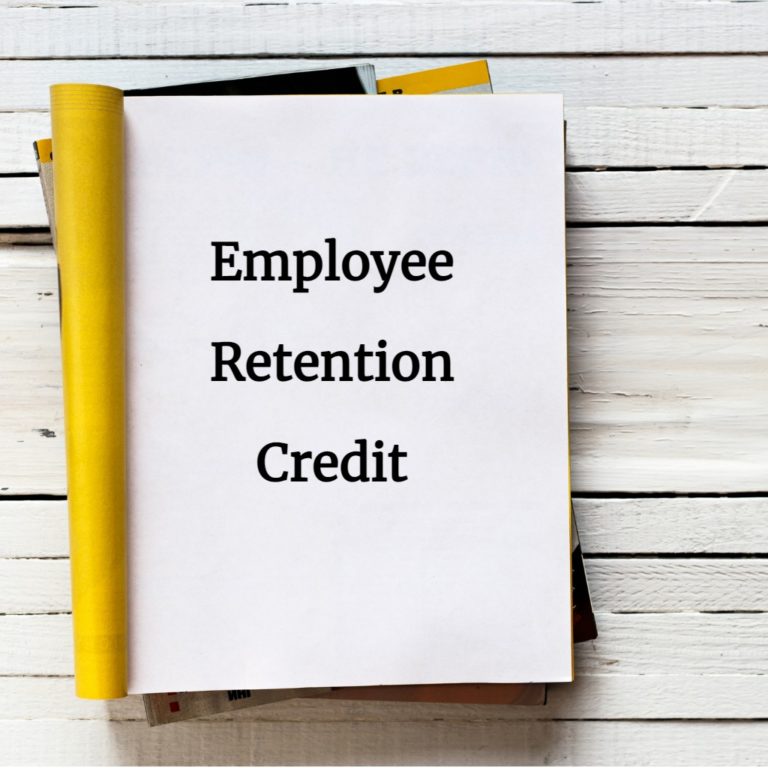The employee retention credit (ERC) is a tax credit available for eligible employers to claim against qualified wages paid after March 12, 2020, through December 31, 2021. While the American Rescue Plan Act of 2021 (ARP) extended the ERC through the end of 2021 and allowed employers to use the ERC against the Sec. 3111(b) Medicare tax after June 30, 2021, the program may be ending following the third quarter of 2021. The Infrastructure Bill that just passed in the Senate is headed to the House and, if passed as is, will end the ERC on October 1, 2021.
The IRS issued a revenue procedure allowing businesses to exclude Paycheck Protection Program (PPP) forgiveness income from first or second draw PPP loans, Shuttered Venue Operator Grant (SVOG) grant income, and Restaurant Revitalization Fund (RRF) grant income from gross receipts for purposes of determining eligibility to claim the ERC. The revenue procedure applies to eligibility to claim the ERC for wages paid after March 12, 2020, and before January 1, 2022.
In addition, the IRS recently issued guidance for the ERC, which describes the requirements for the third and fourth quarters of 2021, which will apply to the third quarter only should the Infrastructure Bill end the program. Here are some key highlights from the IRS’s latest guidance.
Recovery Startup Businesses
In general, an eligible employer is an employer carrying on a trade or business operation that was fully or partially suspended due to a government mandate or order or a business that experiences a decline in gross receipts, according to specific threshold requirements. Recovery startup businesses may be eligible for ERC, even if they don’t meet the full/partial suspension of operations or gross receipts test. A recovery startup business is an employer:
- that started the business after February 15, 2020;
- has average annual gross receipts for the 3-taxable-year period ending with the taxable year that precedes the calendar quarter being tested that do not exceed $1 million; and
- that is otherwise ineligible for the ERC due to a full/partial suspension of operations or a decline in gross receipts.
This requirement is evaluated separately for each quarter. The ERC is calculated at the group level, including affiliates, so aggregation rules apply. For these businesses, the ERC cannot exceed $50,000 for the third or the fourth quarter in 2021.
Severely Financially Distressed Employers
Severely financially distressed employers are qualified as eligible employers based on a decline in gross receipts, but the gross receipts for the eligible employer for the calendar quarter are less than 10% of the gross receipts as compared to the same calendar quarter in 2019 (or 2020, if not in existence in 2019), instead of less than 80%.
In general, qualified wages include healthcare expenses to the extent that they are excluded from employees’ gross income. Businesses may also use healthcare costs paid on behalf of furloughed employees. Both the employer and employee pre-tax portion of health plan expenses are qualified wages; however, HSA contributions are not considered eligible health plan expenses. For larger employers that do not meet the ERC definition of a small business, qualified wages include wages paid to employees when they did not provide services and exclude vacation, or other leave paid pursuant to the employer’s existing leave policy.
For the purposes of determining 2020 ERCs, a small business is one with 100 or fewer average full-time employees in 2019. For 2021 ERCs, a small business is one with 500 or fewer average full-time employees in 2019. If an employer qualifies as a severely financially distressed employer, all wages are eligible for ERC, regardless of small or large business classification.
Double Dipping
While PPP forgiveness and SVOG and RRF grant income may be excluded from gross income when determining ERC eligibility, employers cannot use wages for both ERC and the following programs:
- Paycheck Protection Program forgiveness
- Shuttered Venue Operators Grants (for the third and fourth quarters of 2021)
- Restaurant Revitalization Fund Grants (for the third and fourth quarters of 2021)
Collecting and retaining documentation of what wages are being used for ERC versus other programs remains essential.
Employers CAN claim both the ERC and tip credit under Section 45B.
Disallowed Wage Deduction
Wages must be reduced by the ERC in the tax year in which the period the ERCs were claimed falls. For example, if you claimed ERCs for any quarter in 2020, you must reduce wages deducted on the 2020 return by the amount of the ERC. If you claimed 2020 ERCs, you might want to connect with your accountant, especially if they have already filed your 2020 return. If they didn’t assist you in the ERC process, or don’t otherwise know that you claimed ERCs in 2020, they might need to amend your 2020 returns.
Family Attribution Rules
Business owners owning more than 50% should review the guidance in detail. Family attribution rules may come into play, limiting the owner, spouse, and family member’s wages that may qualify for ERC.
Previous Quarter Gross Receipts
Employers can elect to qualify for ERC based on the previous quarter gross receipts test. In addition, once elected, you aren’t required to use said election consistently for the remaining quarters.
ARB Is Here To Help
ARB has created a Quick Reference Guide that summarizes previous guidance issued for the ERC, outlines key provisions affecting 2020 and 2021 differently, and provides businesses with flowcharts to assist in determining eligibility for 2020 and 2021.
Download ARB’s Quick Reference Guide to the Employee Retention Credit
For ERC guidance for the first and second quarter, check out our previous article, IRS Issues Guidance on Employee Retention Credit for 2021.
by Holly Ferguson, CPA
Holly Ferguson is a principal at ARB and the Practice Leader of the firm’s Accounting & Attest, Manufacturing, and Credit Union Services Teams. She provides industry-specific services for manufacturers, distributors, credit unions, businesses, and nonprofit organizations. Throughout her career, Holly has provided manufacturers with financial reporting consulting services, assisted with transactional accounting and consulting related to business acquisitions/sales, and analyzed implications and strategic implementation of new accounting standards. She is the former Treasurer on the Board of Directors and Finance Committee of the Manufacturers Association of Maine.






